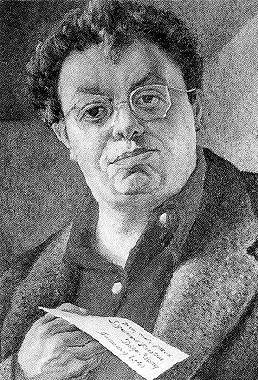Allegory of California
File:Art1$allegory-of-california.jpg
Allegory of California
ALLEGORY (OR RICHES) OF CALIFORNIA (True fresco, 43.82 sq. m., STOCK EXCHANGE--CITY CLUB, 1931)
The two floors of The City Club today seem vintage 1930s "art deco," though Pflueger's interior architect Michael Goodman denied the influence of that European style contemporary to his time. In fact, he said, "The truth is, there is no style here."
When Rivera asked on what wall he would paint this fresco for Pflueger, Goodman said that he would remove some units of the beige travertine marble squares of the stairwell, leaving side borders two squares wide on each side, and make available the ceiling as well. He told Rivera about a night club he had seen in Dusseldorf, Germany, whose owner, reluctant to trim off a long length of batik cloth, had actually draped it from the wall across the ceiling, creating an inverted "L" shape. Rivera was apparently delighted with these proportions, saying that they were perfect for his concepts of "dynamic symmetry" and "golden section".
Thus The City Club mural covers a wall between the tenth and eleventh floors and the ceiling above it. Having recently painted frescoes in the chapel at Chapingo, where Rivera portrayed his second wife Lupe as fertile Earth Goddess, he here binds that theme of agriculture to industry, reflecting Ralph Stackpole's two outdoor icon sculptures of those subjects (sources of wealth in California in the 1930s), on Pine Street in front of the Stock Exchange. Here Rivera employs the feminine goddess theme to represent the riches of California, both of the earth and of human endeavor. Famous tennis champion Helen Wills Moody, wearing a gold-leafed wheat motif necklace, with blue eyes looking serenely straight ahead, holds wheat and fruit in her left hand, while her great right hand scoops up earth to reveal the workers toiling in the mines to extract the minerals of industry. In the upper background the artist shows industries of the San Francisco Bay Area--the oil refineries of Richmond, the shipping companies (Matson and Dollar lines) of the Pacific Ocean, and dredging equipment then used in river dredging in search of gold. Two symbols that recur in each of the three major San Francisco frescoes first appear here: one is the portrayal of humanoid air exhaust vents, mechanically fascinating to Rivera, on the top of a building; the second, a gauge with an alarming red warning hand, perhaps representing Rivera's notion that capitalism will ultimately self-destruct.
Specific figures like James Marshall, discoverer of gold at Sutter's Creek in 1848; Luther Burbank, famous horticulturist; Peter Stackpole, the sculptor's son, here holding a model airplane as a vision of future transportation; and Victor Arnautoff, fellow muralist, highlight the development of California after the discovery of gold altered its economy. The Earth Goddess of Chapingo also becomes a Sky Goddess as Moody dives across the ceiling. The birds of the chapel have become airplanes, and there are two amazing examples of polyangularism: an androgynous model, which when folded appears feminine and when extended seems masculine; and a giant sun face, whose beneficent gaze appears to follow the viewer as he walks below it.
Although those who selected Rivera for this commission were worried that he might paint revolutionary subjects (just as he was doing in Mexico City), he managed to please his patrons, even though he signed the mural in red paint beneath a redwood tree stump at far left. Today one could say that he depicted the exploitation of the land for profit, but he also celebrated a vibrant aspect of the California economy while portraying harmony between nature and humanity.
--Masha Zakheim, from Diego Rivera en San Francisco © 1998 Crculo de Arte
Diego Rivera
Contributors to this page include:
Rutgers University,New Brunswick,NJ - Publisher or Photographer
Rivera,Diego - Photographer-Artist
Rutgers University,New Brunswick,NJ - Publisher or Photographer
Circulo de Arte - Publisher or Photographer
Jewett,Masha,Zakheim - Writer

